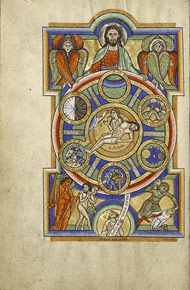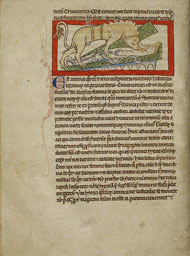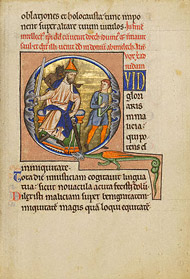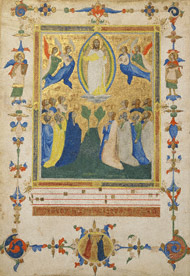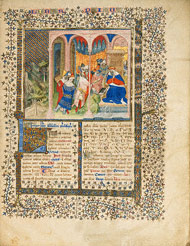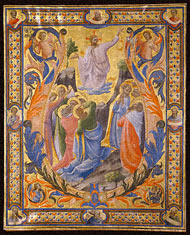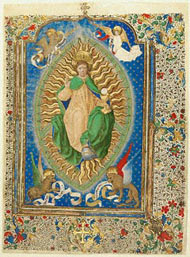| Education | ||
| Exhibitions | ||
| Explore Art | ||
| Research and Conservation | ||
| Bookstore | ||
| Games | ||
| About the J. Paul Getty Museum | ||
| Public Programs | ||
| Museum Home
|
February 12–April 20, 2008 at the Getty Center
This exhibition features selected manuscript acquisitions made by the Getty Museum since the Getty Center opened in 1997. Many of the world's artistic treasures are held in private collections. When museums acquire such works, they make them available to a much broader audience. In 1997 the Museum acquired one of its greatest masterpieces, the Stammheim Missal, which had been publicly exhibited only twice before. In fact, because the book was originally commissioned for a medieval monastery, even in the Middle Ages it was probably brought out only on special feast days and seen exclusively by high-ranking officials of the church and court. More people have viewed it over the last decade than over the previous eight centuries. |
|||||||||||||||||||||||||||
Discoveries and Rediscoveries Unexpected opportunities to acquire exceptional manuscripts have considerably enhanced the collection. Some of these manuscripts were unrecorded; others were rediscovered after years of being thought lost. Finding such works—such as the Northumberland Bestiary, a page of which is shown here—is a joy for both the collector and the scholar. |
|||||||||||||||||||||||||||
Another rediscovery occurred in 1986, when a masterpiece of early French Gothic manuscript illumination appeared in a sale in Avranches, a small town in northwest France. Nothing had been heard of the manuscript since 1785, when it was described in the catalogue of an auction sale in Paris. The manuscript's reappearance caused a sensation in the art world. |
|||||||||||||||||||||||||||
Collecting Leaves versus Books Since the late Middle Ages, collectors have cut individual illuminations and even entire pages from books. As a result of this practice, leaves and cuttings from books are common in collections worldwide. When a truly important book has been divided and its leaves dispersed, the Museum has endeavored to acquire more than one example of its illumination in order to offer visitors a taste of the originality and complexity of the entire book. |
|||||||||||||||||||||||||||
Building on Strengths and Filling Gaps
In building its manuscripts collection, the Museum endeavors to balance two goals: to acquire exceptional masterworks and to tell the comprehensive story of the history of medieval European manuscript illumination. These goals are achieved by building on already strong areas and by assembling works that represent all of the great schools of manuscript illumination as well as the major artists, the many types of books, and even the most important patrons. |
|||||||||||||||||||||||||||
Sometimes a single acquisition meets several of the Museum's collecting goals at once. In 2003, the Getty acquired the
Book of the Philosopher Alchandreus, which claims to be a Latin translation of an Arabic treatise on astronomy. Arabic science had a great influence on western European thought during the Middle Ages. |
|||||||||||||||||||||||||||
Unexpected Opportunities The market for high-quality manuscript illumination is small and unpredictable. Not only are the whereabouts of exceptional books and leaves sometimes unknown, but it is difficult to predict whether or when owners might want to sell their treasures. Patience rules. |
|||||||||||||||||||||||||||
The Role of Gifts
The Museum's manuscripts collection has grown mainly through purchased acquisitions. However, most major museum collections are built not only through purchases but also through the generous gifts of discerning collectors. In a similar way, the Museum has been fortunate to benefit from the donation of several examples of high-quality manuscript illumination. |
|||||||||||||||||||||||||||
|
|||||||||||||||||
|
|
|||||||||||
